The compact SUV segment is witnessing a fierce competition, particularly between the Toyota C-HR and the Volvo XC40. Both vehicles offer unique features and innovations, catering to distinct preferences among buyers. In this article, we’ll delve deep into their specifications, technical offerings, and innovative technologies to help you decide which is the superior choice for your needs.
Toyota C-HR vs Volvo XC40 – Which one offers the better deal?
Compare performance, boot capacity, efficiency and price at a glance.
Find out which car is the better choice for you – Toyota C-HR or Volvo XC40?
Design and Dimensions
The Toyota C-HR presents an aggressive and sporty design with sharp lines and a distinctive front fascia. Measuring 4362 mm in length, 1832 mm in width, and 1558 mm in height, it exudes a modern aesthetic. The Volvo XC40, slightly larger at 4425 mm long, 1863 mm wide, and 1652 mm high, carries the signature Volvo look with a more robust and muscular presence. Both vehicles feature a five-door setup, ensuring practicality alongside style.
Powertrain and Performance
When comparing powertrains, the Toyota C-HR offers a range of options including Full Hybrid and Plug-in Hybrid engines with power outputs between 140 HP and 223 HP. This model delivers impressive fuel consumption as low as 4.7 L/100km, making it an ideal choice for eco-conscious drivers. The C-HR’s acceleration capabilities range from 7.4 to 9.9 seconds for 0-100 km/h, depending on the chosen engine.
On the other hand, the Volvo XC40 is equipped with a petrol MHEV engine providing up to 197 HP. While its fuel consumption stands at approximately 6.5 L/100km, it accelerates from 0-100 km/h in 7.6 seconds, slightly lagging behind its Toyota counterpart. Both vehicles, however, exhibit a top speed of 180 km/h, showcasing their performance prowess.
Driving Experience and Handling
Both models feature automatic transmissions, with the Toyota C-HR utilizing a Continuously Variable Transmission (CVT) for smooth and efficient driving. The Volvo XC40 employs a dual-clutch automatic transmission, offering crisp shifting and enhanced control. The C-HR is available in both Front-Wheel Drive (FWD) and All-Wheel Drive (AWD) configurations, while the XC40 predominantly offers FWD, ensuring versatility in driving conditions.
Interior Comfort and Technology
Inside, the Toyota C-HR’s cabin is designed with a focus on comfort and modern technology. It provides ample space for five passengers and a trunk capacity ranging from 350 to 447 liters, depending on the variant. The cabin is equipped with the latest infotainment systems compatible with smartphones, adding convenience to every drive.
Conversely, the Volvo XC40 boasts a minimalist and contemporary interior that emphasizes Scandinavian design. With a trunk capacity of 452 liters, it offers slight superiority in cargo space. The XC40 is also known for its high-quality materials and advanced technology integration, including a sophisticated infotainment system that enhances the overall driving experience.
Fuel Efficiency and Environmental Impact
Fuel efficiency is a significant consideration for many buyers, and both the Toyota C-HR and Volvo XC40 offer competitive figures. The C-HR’s hybrid variants, with emissions as low as 19 g/km, reflect a strong commitment to reducing environmental impact. In contrast, the XC40's CO2 emissions hover around 147–148 g/km, placing it at a disadvantage in the eco-friendly category.
Safety Features and Innovations
Safety is a priority for both Toyota and Volvo. The C-HR is equipped with a robust set of safety features including adaptive cruise control, lane-keeping assist, and a pre-collision system. Meanwhile, Volvo's reputation for safety shines through with its innovative driver assistance systems and a comprehensive suite of safety technologies designed to protect occupants in various situations.
Conclusion: Which SUV Reigns Supreme?
In summary, choosing between the Toyota C-HR and the Volvo XC40 comes down to personal preference and priorities. The C-HR stands out for its hybrid efficiency, agility, and sporty design, making it an excellent choice for urban driving. Meanwhile, the XC40 offers premium quality, superior interior comfort, and robust safety features that appeal to luxury buyers. Whether you prioritize environmental impact or a plush driving experience, both vehicles embody their brands’ dedication to quality, making them worthy contenders in today’s competitive SUV market.
Here’s where it gets real: The technical differences in detail
Costs and Efficiency:
When it comes to price and running costs, the biggest differences usually appear. This is often where you see which car fits your budget better in the long run.
Toyota C-HR has a evident advantage in terms of price – it starts at 29100 £, while the Volvo XC40 costs 36800 £. That’s a price difference of around 7628 £.
Fuel consumption also shows a difference: Toyota C-HR manages with 0.80 L and is therefore significantly more efficient than the Volvo XC40 with 6.50 L. The difference is about 5.70 L per 100 km.
Engine and Performance:
Power, torque and acceleration say a lot about how a car feels on the road. This is where you see which model delivers more driving dynamics.
When it comes to engine power, the Toyota C-HR has a to a small extent edge – offering 223 HP compared to 197 HP. That’s roughly 26 HP more horsepower.
In acceleration from 0 to 100 km/h, the Toyota C-HR is slight quicker – completing the sprint in 7.40 s, while the Volvo XC40 takes 7.60 s. That’s about 0.20 s faster.
There’s no difference in top speed – both reach 180 km/h.
Space and Everyday Use:
Beyond pure performance, interior space and usability matter most in daily life. This is where you see which car is more practical and versatile.
Both vehicles offer seating for 5 people.
In curb weight, Toyota C-HR is somewhat lighter – 1505 kg compared to 1688 kg. The difference is around 183 kg.
In terms of boot space, the Volvo XC40 offers slight more room – 452 L compared to 447 L. That’s a difference of about 5 L.
In maximum load capacity, the Volvo XC40 performs somewhat better – up to 1328 L, which is about 173 L more than the Toyota C-HR.
When it comes to payload, Volvo XC40 distinct takes the win – 532 kg compared to 425 kg. That’s a difference of about 107 kg.
Who wins the race?
The Toyota C-HR proves to be outperforms in nearly all aspects and therefore becomes our DriveDuel Champion!
Toyota C-HR is the better all-rounder in this comparison.
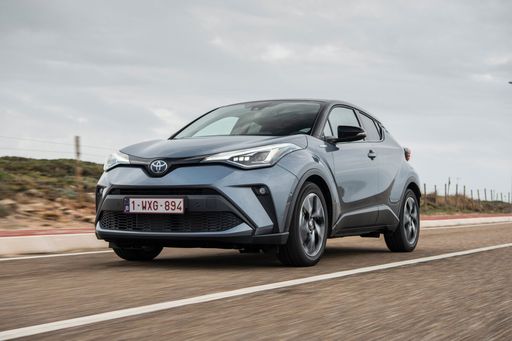 @ Toyota Motor Corporation
@ Toyota Motor Corporation
Toyota C-HR
Toyota C-HR
The Toyota C-HR cuts a striking figure with its angular styling and coupe-like profile, so you’ll never go unnoticed in the supermarket car park. It balances everyday practicality with a nimble, city-friendly personality, making routine commutes feel a touch more fun without asking for forgiveness.
details @ Toyota Motor Corporation
@ Toyota Motor Corporation
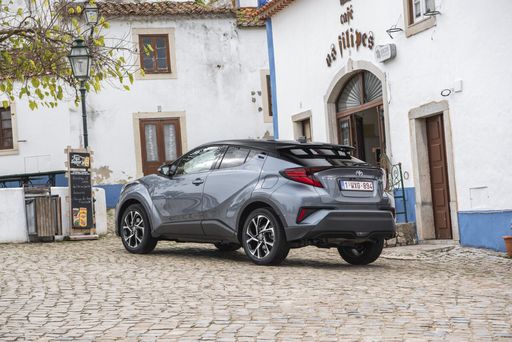 @ Toyota Motor Corporation
@ Toyota Motor Corporation
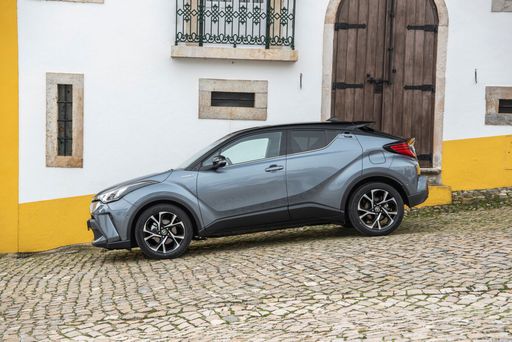 @ Toyota Motor Corporation
@ Toyota Motor Corporation
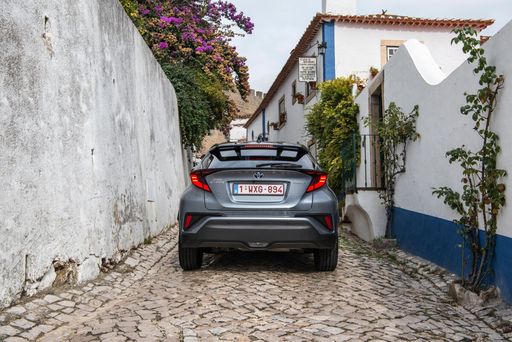 @ Toyota Motor Corporation
@ Toyota Motor Corporation
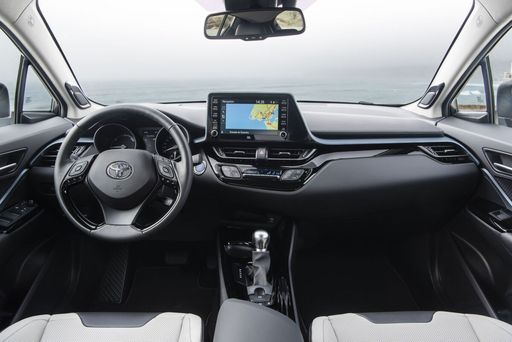 @ Toyota Motor Corporation
@ Toyota Motor Corporation
Volvo XC40
The Volvo XC40 wraps Scandinavian minimalism into a compact, city-ready SUV with a premium cabin that feels both practical and grown-up. It will suit buyers who prize safety, clever storage and a composed ride, proving that small dimensions don't mean small personality.
details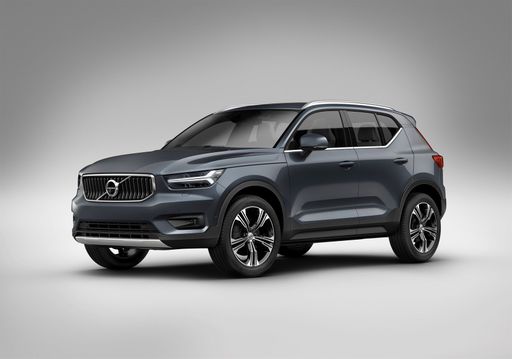 @ Volvo Cars
@ Volvo Cars
 @ Volvo Cars
@ Volvo Cars
 @ Volvo Cars
@ Volvo Cars
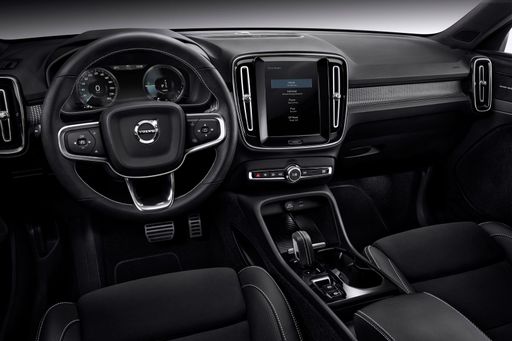 @ Volvo Cars
@ Volvo Cars
 @ Volvo Cars
@ Volvo Cars
 @ Toyota Motor Corporation
@ Toyota Motor Corporation
|
 @ Volvo Cars
@ Volvo Cars
|
|
|
|
Costs and Consumption |
|
|---|---|
|
Price
29100 - 42800 £
|
Price
36800 - 47200 £
|
|
Consumption L/100km
0.8 - 5.1 L
|
Consumption L/100km
6.50 L
|
|
Consumption kWh/100km
-
|
Consumption kWh/100km
-
|
|
Electric Range
68 km
|
Electric Range
-
|
|
Battery Capacity
-
|
Battery Capacity
-
|
|
co2
17 - 115 g/km
|
co2
147 - 148 g/km
|
|
Fuel tank capacity
43 L
|
Fuel tank capacity
54 L
|
Dimensions and Body |
|
|---|---|
|
Body Type
SUV
|
Body Type
SUV
|
|
Seats
5
|
Seats
5
|
|
Doors
5
|
Doors
5
|
|
Curb weight
1505 - 1755 kg
|
Curb weight
1688 kg
|
|
Trunk capacity
350 - 447 L
|
Trunk capacity
452 L
|
|
Length
4362 mm
|
Length
4425 mm
|
|
Width
1832 mm
|
Width
1863 mm
|
|
Height
1558 - 1564 mm
|
Height
1652 mm
|
|
Max trunk capacity
1076 - 1155 L
|
Max trunk capacity
1328 L
|
|
Payload
375 - 425 kg
|
Payload
532 kg
|
Engine and Performance |
|
|---|---|
|
Engine Type
Full Hybrid, Plugin Hybrid
|
Engine Type
Petrol MHEV
|
|
Transmission
Automatic
|
Transmission
Automatic
|
|
Transmission Detail
CVT
|
Transmission Detail
Dual-Clutch Automatic
|
|
Drive Type
Front-Wheel Drive, All-Wheel Drive
|
Drive Type
Front-Wheel Drive
|
|
Power HP
140 - 223 HP
|
Power HP
163 - 197 HP
|
|
Acceleration 0-100km/h
7.4 - 9.9 s
|
Acceleration 0-100km/h
7.6 - 8.6 s
|
|
Max Speed
175 - 180 km/h
|
Max Speed
180 km/h
|
|
Torque
-
|
Torque
265 - 300 Nm
|
|
Number of Cylinders
4
|
Number of Cylinders
4
|
|
Power kW
103 - 164 kW
|
Power kW
120 - 145 kW
|
|
Engine capacity
1798 - 1987 cm3
|
Engine capacity
1969 cm3
|
General |
|
|---|---|
|
Model Year
2024 - 2025
|
Model Year
2024
|
|
CO2 Efficiency Class
C, B
|
CO2 Efficiency Class
E
|
|
Brand
Toyota
|
Brand
Volvo
|
What drivetrain options does the Toyota C-HR have?
Available configurations include Front-Wheel Drive or All-Wheel Drive.
The prices and data displayed are estimates based on German list prices and may vary by country. This information is not legally binding.
